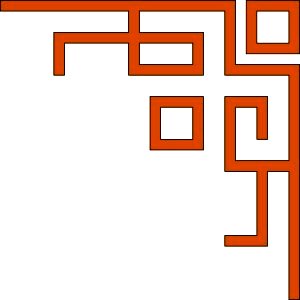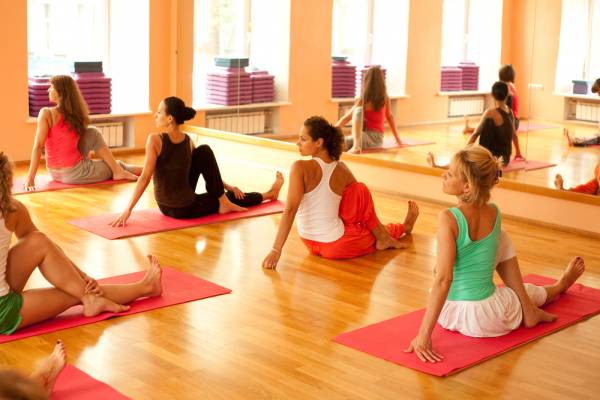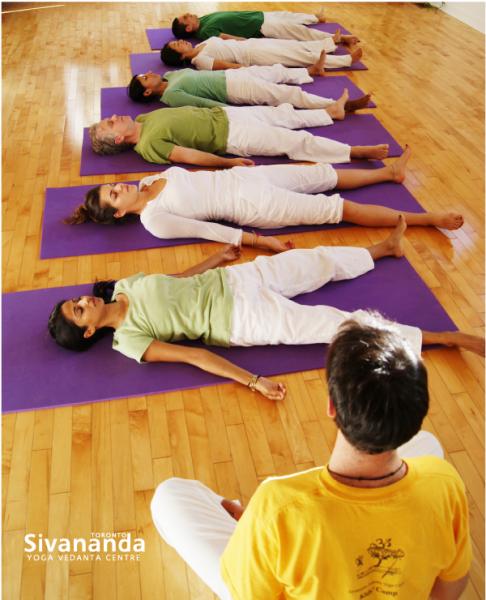Sivananda Yoga
 RELAXING YOGA CLASS Private Consultation & Yoga Class with Dave West 1 class 2 hours USD 80 Advanced payment required with |
SIVANANDA YOGARelaxing Yoga in Bali with Dave West
|
 RELAXING YOGA COURSE Private Consultation & Yoga Course with Dave West 5 classes 2 hours each USD 390 Advanced payment required with |
 |
 |
 |
 |
Traditional Yoga from the Heart of IndiaSivananda Yoga is a traditional, slow paced, meditative class that helps encourage proper breathing, flexibility, strength and vitality in the body while calming the mind. Because Yoga is a spiritual system with a physical component, this non-competitive relaxed approach helps the practitioner gain much more than just a healthy body. A typical beginner class includes warm-ups (surya namaskar), breathing exercises (pranayama), 12 basic postures (asana) and deep relaxation (nidra). The focus is on mastering the basic asanas from which variations are then added to further deepen the practice. The asanas follow an exact order that allows for the systematic movement of every major part of the body in a balanced way that enhances prana or life force energy, keeping the mind quiet and without the need to think beyond each individual posture. Additional variations may also be taught. Asana is one of the eight limbs of classical Yoga, which states that poses should be steady and comfortable, firm yet relaxed helping a practitioner to become more aware of their body, mind, and environment. The 12 basic asanas of Sivananda Yoga are much more than just stretching. They open the energy channels, chakras and psychic centers of the body while increasing flexibility of the spine, strengthening bones and stimulating the circulatory and immune systems. Along with proper breathing (pranayama), asanas also calm the mind and reduce stress. With regular practice they ensure overall physical and mental health and the possible prevention of diseases such as diabetes, hypertension and arthritis. In time, performing the asanas slowly and consciously, becomes a mental exercise in concentration and meditation. * Yoga is not used for diagnostic purposes nor should there be expectations about the outcome of the class. Yoga always works, sometimes on unseen levels of the being. Your first Yoga class awakens your inner guru. For deep healing it is recommended to have 5 private classes on 5 consecutive days. |
RELAXING YOGA Private Class with Dave West Private Consultation & Training Introduction to Sivananda Yoga Asana – gently stretching the body Pranayama – energizing healing breath Nidra – relaxation for stress management Dhyana – healing meditation Mantra – vibration healing chants Chakra Meditation – balancing body mind spirit
 |

The Five Points of Yoga
Professional guidance is essential, especially in correctly understanding and applying fundamental principles. Teachers are very useful especially for beginners in helping them stay on the path and avoid misunderstandings. To clarify the science of yoga and make it accessible to the majority of seekers, Swami Vishnu-devananda extracted its essence and presented it in five universal principles for physical and mental health as well as spiritual growth. These five principles constitute the essence of the teachings of the Sivananda Yoga Vedanta Centres.
1. PROPER EXERCISE – Our physical body is meant to move and exercise. If our lifestyle does not provide natural motion of muscles and joints, then disease and great discomfort will ensue with time. Proper exercise should be pleasant to the practitioner while beneficial to the body, mind and spiritual life.
2. PROPER BREATHING – Yoga teaches us how to use the lungs to their maximum capacity and how to control the breath. Proper breathing should be deep, slow and rhythmical. This increases vitality and mental clarity.
3. PROPER RELAXATION – Long before the invention of cars, planes, telephones, computers, freeways and other modern triggers of stress, the ancient rishis and yogis devised very powerful techniques of deep relaxation. Many modern stress-management and relaxation methods borrow heavily from this tradition. By relaxing deeply all the muscles we can thoroughly rejuvenate our nervous system and attain a deep sense of inner peace.
4. PROPER DIET – Besides being responsible for building our physical body, the foods we eat profoundly affect our mind. For maximum body-mind efficiency and complete spiritual awareness, yoga advocates a lacto-vegetarian diet. This is an integral part of the yogic lifestyle.
5. MEDITATION AND POSITIVE THINKING – Here is the most important point of all, we become what we think. Thus, we should exert to entertain positive and creative thoughts as these will contribute to vibrant health and a peaceful, joyful mind. A positive outlook on life can be developed by learning and practising the teachings of the philosophy of Yoga and Vedanta. The mind can be brought under perfect control by the regular practice of meditation.



Guidelines For Asanas
It is highly recommended to study asana with a qualified and experienced yoga instructor. Though any person may start to practise asana, they are only truly effective and beneficial if practised correctly and in the proper manner, and after correct preparation. It is recommended that you warm-up the body with Surya Namaskar or dynamic stretches before practising asana. This will loosen up the body, remove simple physical blockages and can greatly enhance your asana and meditation session. Regular, systematic practice with patience, gentleness and determination is essential for success. It is advised that you take it really slowly at first. Asana practice should be sensible and well structured. Each asana should be performed slowly with complete awareness of the body, breathing and mind. Inverted and advanced asanas should be practised with caution to avoid negative side-effects. Sivananda Yoga instructors recommend that the following advice and precautions for asana should be carefully observed to avoid injury and preserve the true goal of yoga.
1. Professional guidance is essential, especially in correctly understanding and applying fundamental principles. Teachers are very useful especially for beginners in helping them stay on the path and avoid misunderstandings.
2. Practice asana regularly in a clean and quiet place in nature, sheltered from excess heat, cold and wind.
3. Before you begin ensure that the stomach, bladder and bowels are empty.
4. Wear loose and comfortable clothes made from natural fibres. Remove all jewellery, watches and spectacles/glasses. For stability, always practise on a yoga mat or blanket, but not on a thick or large spongy mattress.
5. Make sure you have plenty of space to freely move around. Do not practise under a ceiling fan or near furniture.
6. Always warm up and loosen the whole body at the start of a session with dynamic stretches or Surya Namaskar.
7. Asana is practised to gain alertness, lightness and steadiness of the body and the ability to remain comfortable in a pose, in preparation for prolonged periods of time sitting in meditation.
8. Asana practice should be suitable and well structured. Choose asanas that are within your capability. Practise easy asana for several months before attempting advanced variations. Do not over-stretch your limit. Do not strain. Be gentle and avoid injury.
9. Direct all your positive thoughts to yourself. Each asana should be performed slowly with complete awareness of the body, breath and mind. Without total inner awareness the many benefits are reduced. Learn the awareness point for each asana, whether it is part of the body, one of the corresponding chakras or energy channels, the breath, oneness, or emptiness.
15. Always breathe gently, smoothly and completely through the nose. Do not strain. It is extremely important to co-ordinate the asana with the breath. Each breath affects the intensity of the asana. Forward bending poses lend themselves to holding the breath following exhalation. Backward bending poses lend themselves to holding the breath following inhalation.
11. To keep the body balanced and avoid negative side-effects, always do the correct counter-pose for each main asana: a forward bend followed by a backward bend. To avoid creating more tension make sure that the counter-pose is simpler than the main asana.
12. Accept your starting point and progress gradually with a suitable and structured program. Avoid contortionism and gymnastic competition. If you feel tired at anytime, rest in corpse pose. At the end of your asana practice always relax in corpse pose for 15 minutes.
WARNING: People suffering from sciatica, slipped disc, high blood pressure, coronary ailments and any other serious illness should seek professional medical advice before commencing asana. To avoid injury always consult your medical doctor before commencing any health program. The amount of physical activity you perform should be safely within your physical limitations. Proceed with a suitable and structured program.
International Sivananda Yoga Vedanta Centres
|
Sivananda Yoga Vedanta Centres are a worldwide organisation that aim to cut through the commercialism that now clouds the real meaning of Yoga. Beyond the postures and exercises, the teachings of Sivananda Yoga show us the path to freedom, direct realisation of Truth, and loving union with the Divine. Sivananda Yoga is a foundation in personal development based on the original teachings of Swami Sivananda Saraswati and Swami Vishnu-devananda, for those who sincerely choose to take to the spiritual path with regular systematic Sadhana to attain harmony and balance in body, mind and spirit. Sivananda Yoga is a comprehensive guide to the ancient Indian health and purification techniques that prepare the mind and body for spiritual living. This course includes detailed analysis and instruction in Asana, Pranayama, Kriya, Bandha, Mudra, Yoga Nidra, Chanting, Japa and Mantra Meditation, and Karma Yoga. For the deep purification benefits of Sivananda Yoga to become truly effective it is recommended that all students engage in a holistic and moral lifestyle. This includes becoming mindful of all thought, speech and action, and reducing sexual activity and the consumption of animal products, alcohol and tobacco. Sivananda Yoga topics include: |
 |
ANATOMY – Introduction to the Body Systems, Yoga Exercise and Physical Culture, Yoga Postures and Mobility, Diet and Nutrition, Fasting.
HATHA YOGA Purification of the body and mind, Six Internal Cleansing Techniques (Shatkarma), Salutations to the Sun, Twelve Asanas of Sivananda Yoga, Deep Relaxation, Pranayama – control and regulation of the life-force using breath, Bandha – muscular locks, Mudra – subtle energy and psychic gestures, Dharana – concentration.
MEDITATION – Introduction to Meditation and Inner Awareness of the Divine Light, Mantra – repetition of sacred syllables and words to attain realisation of the Self, Conscious repetition of God’s name, Experiences and obstacles to meditation.
PHILOSOPHY OF YOGA – The Bhagavad Gita, Brahman, Brahma and The Three Gunas, The Eight Limbs of Yoga, The Five Points of Yoga, The Absolute and Evolution of Prakriti, Bliss Absolute, The nature of Prana, Chakras, Nadis, Sushumna Ida and Pingala, Kundalini, Holistic living through yogic lifestyle, Conserving sexual energy for spiritual awakening, Keeping a Spiritual Diary.
KIRTAN – The ancient musical tradition of calling upon sacred energies which serve to quiet the mind and remove obstacles, Chanting God’s name to purify our heart and mind and attain perfection.
Yoga – The Divine Science of Life“Opening the heart with meditation is the return to truth and love.” Yoga is a component of Tantra, and is one of the six orthodox systems of Indian philosophy. It has been practised for thousands of years and is the oldest system of personal development in the world, encompassing body, mind and spirit. In India, it is regarded as the divine science of life, and is concerned with freedom from spiritual disturbance. Yoga is the gentle process of cleansing the consciousness to gradually reveal one’s true identity as a spiritual being. Through yoga the soul becomes perfectly tranquil and serene. Without yoga the soul is constantly subject to disturbance. My guru, Swami Shyam Yogi of Pushkar Rajasthan India, taught us that the regular practice of Yoga develops love, wisdom and compassion, inspiring self-discipline and spiritual living. |
 |
Yoga revitalises the body and mind by removing energy blockages and improving circulation. Yoga releases tension and stress, promoting strength and vitality, weight loss, and resistance to disease. The regular practise of Yoga brings health, happiness and inner peace to your mind, body and spirit and illuminates the path of self-discovery and enlightenment. By exercising every part of the body, toning the muscles and joints, the spine, the entire skeletal system, the internal organs, glands and nerves, all systems are restored to radiant health. Powerful breathing techniques recharge the whole system with prana – life force energy. Relaxation, meditation and the chanting of sacred mantras bring stillness and tranquility to the mind, allowing you to explore higher realms of consciousness.

Yoga is the gentle process of cleansing the consciousness
to gradually reveal one’s true identity as a spiritual being.
Through yoga the soul becomes perfectly tranquil and serene.
Without yoga the soul is constantly disturbed.
JAY VIJAY DAS
